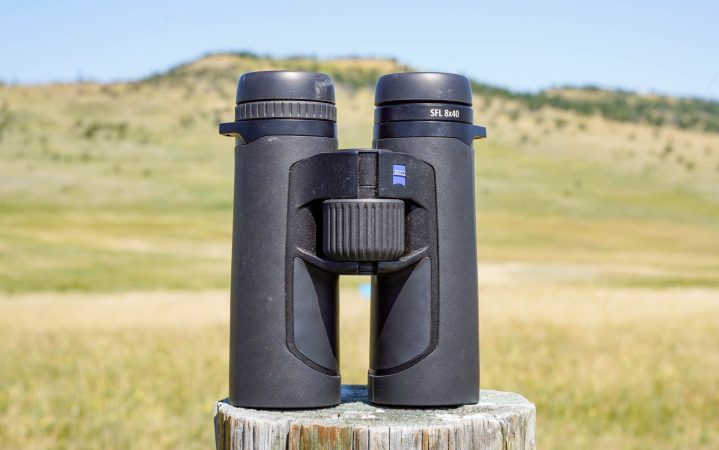Trash Fish or Treasure? The Value of Black Drum, Bonita, and Mahi Depends on Where You Fish for Them
In February, angler Andrew Quintana made local news in Texas after landing a massive 50-inch black drum from shore. According to the story on Chron.com, Quintana’s fish drew a divided reaction when posted on social media. Some commenters referred to this fish and all other large black drum as “big uglies.” The catch even sparked a debate over whether targeting black drum was worth an angler’s time. The answer to that question, however, has less to do with the fish and more to do with where you’re catching them.
Black drum are one of several saltwater species that’s depends upon their geography. Cultural differences, availability of these fish, and their perceived level of deliciousness all vary between the northern and southern U.S. But by looking at why one man’s trash is another man’s treasure, we can gain a greater appreciation for all these species even if we don’t live where they’re particularly popular. So, here are three saltwater species that create some of the biggest regional divisions. Well, start with those “big ugly” black drum.
Black Drum
South: The inshore waters, bays, and estuaries from Virginia, around Florida, and all the way to Texas are rife with black drum. Year-round, you’ll find them in a wide range of sizes, and they’re usually eager to snatch up natural and cut baits like shrimp and mullet. This, however, is part of the reason why these fish don’t get a ton of love in the South. They are generally unwelcomed party crashers for anglers more interested in popular species like red drum, snook, and speckled seatrout that share their habitat. What makes them even less appealing is their plate appeal. While some Southerners target small black drum for the table, they largely take a backseat to more desirable fish like flounder, cobia, sheepshead, and red drum. It also doesn’t help that southern black drum—large ones especially—are notorious for being riddled with worms. Big fish in coastal estuaries also tend to collect mud and algae on their scales, making them look rather unpleasant (hence that nickname, “big ugly”). Compared to red drum, many anglers would also say their fight lacks pizzazz.
North: North of Virginia, black drum are revered in many angling circles, mostly because they don’t live in these waters year-round. Their presence between Southern Long Island in New York and Maryland is fleeting. Massive schools of drum move into the bays and surf line from offshore to spawn, and their arrival is dictated by moon phases in May and June. Ironically, while these fish are far more prevalent in the South, the Northeast boasts some of the biggest black drum catches, including the 113-pound world record that has stood since 1975. That fish was caught in Delaware Bay, and even today, this body of water continues to kick out 60-plus-pound drum every spring. Black drum also invade the beaches in this zone, giving striped bass anglers fishing baits like clams and menhaden another target with shoulders to tussle with in the waves. Because Northeast drum come in from offshore, they tend to be cleaner, and less worm riddled. It’s not uncommon for anglers here to keep large specimens, as barbecued drum ribs and drumfish Parmigiana are both popular local dishes.
Read Next: Best Redfish Lures
Bonita
South: If you want to catch a trophy bonita—north of 20 pounds, that is—there’s no better place to do it than the South. These tuna cousins are abundant year-round from the Atlantic Coast of Florida all the way across the Gulf of Mexico to Texas. With suitable water temperatures even in winter and an abundance of food, it’s not difficult to get a school of bonita fired up just a couple miles offshore with a bit of chum. The problem is that there are so many bonita in the South, they’re a nuisance to most anglers. That’s not to suggest they don’t have loyal fans wielding fly rods and light-tackle outfits in this zone. But by and large, bonita frustrate anglers because they beat snapper to their jigs, yellowfin tuna to their chunk baits, and kingfish to their trolling lures. Given their speed and strength, fighting them takes time and zaps your energy—which you might need when the desired target strikes. While related to tuna, bonita flesh is dark and saturated with oil, so it has little food value. At best, anglers keep a few to cut up for strip baits when targeting species like yellowfin tuna and swordfish.
North: Talk to an offshore captain operating from the Carolinas up through Massachusetts, and his or her attitude about bonita won’t vary much from a southern offshore captain’s. Spring through summer, these fish feed heavily in the Gulf Stream currents and do little more than disappoint when a trolling rod gets hammered and you’re hoping for a delicious bluefin or yellowfin tuna. If you’re an inshore light-tackle, surf, or fly fisherman, however, bonita are held in high regard. Come fall, these fish—commonly referred to as “false albacore” here—migrate from offshore to feed on the anchovies, peanut bunker, and glass minnows flushing out of the bays. They can be found within sight of the beach, as well as right in the waves, making them accessible to boatless anglers. Their food value doesn’t change here, but their ability to out-fight local players like striped bass and bluefish has earned them a cult following. Locations like Point Judith, Rhode Island, Montauk, New York, and Harkers Island, North Carolina, are all meccas for speed junkies addicted to these fish.
Read Next: I Ate Raw False Albacore — and Liked It
Dolphin
South: Nothing says “Florida fishing” like a dolphin—a.k.a. mahi-mahi. You’ll see them hanging in countless seafood restaurants, adorning apparel, and painted on marina and tackle shop signs from Jacksonville to Key West. There are, of course, several good reasons for all this mahi love. Dolphin are abundant in Florida and Gulf waters practically year-round. They’re also delicious and pretty, which makes them highly appealing to tourist anglers. There are loads of ancient dolphin mounts at flea markets and antique shops because the Florida charter industry has thrived off the species for decades. Mahi are eager to bite a wide range of lures and baits and routinely hit the 30-pound mark. Dolphin also gravitate to floating structure, and there’s no shortage of Sargassum weed bobbing on the surface from the Florida Keys to the Carolinas. These thick mats of free-drifting vegetation are magnets for small fish and crustaceans that dolphin love to eat, so throughout much of the year, getting charter clients on hard-fighting dolphin isn’t a huge challenge.
North: It’s not that northern anglers don’t like dolphin, it’s just that they’re often downgraded to a plan C or D during an offshore trip. From Virginia to Massachusetts, getting into warm-water species like dolphin requires a much longer run than it does in Florida and the Gulf. Boat fuel isn’t cheap, so those willing to fill their tanks or book an expensive charter to reach Gulf Stream waters, 30, 50, or even 100 miles offshore in the summer months want yellowfin tuna, bigeye tuna, wahoo, and white marlin. With a lack of Sargassum weed, floating structure is also in much shorter supply. If you get lucky and run across a drifting tree trunk or flotsam from a ship, you’ll likely find dolphin patrolling underneath. They also gravitate to the buoys used to mark strings of lobster pots. Some anglers target them specifically with light tackle, which is the right way to do it. If you’re trolling gear heavy enough to battle tuna or marlin, however, you’ll barely feel a 10-pound mahi when it snatches your ballyhoo. For many anglers here, dolphin are a consolation prize, or only worthy of a quick stop on the way home.
The post Trash Fish or Treasure? The Value of Black Drum, Bonita, and Mahi Depends on Where You Fish for Them appeared first on Outdoor Life.
Source: https://www.outdoorlife.com/fishing/trash-fish-black-drum-bonita-mahi/


